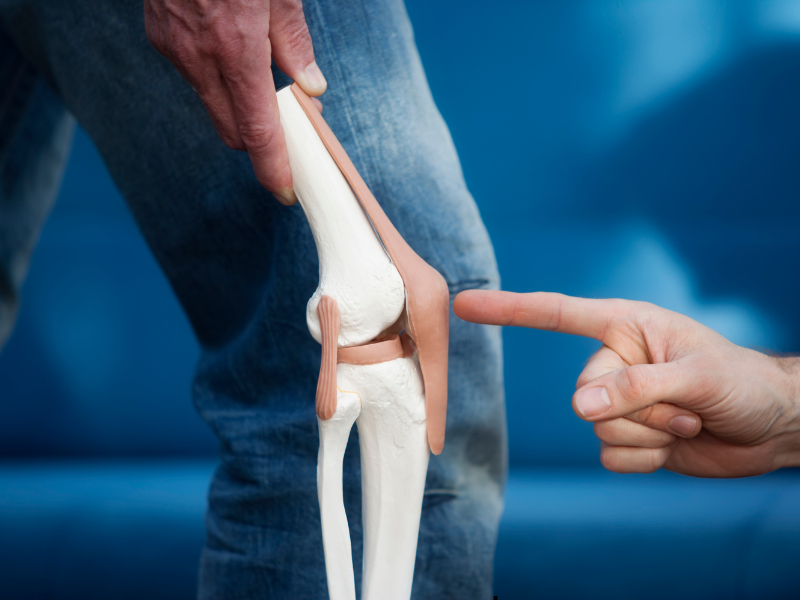Total Joint Replacement

Find The Best Total Joint Replacement Surgeon
About Total Joint Replacement
Total joint replacement is a comprehensive surgical procedure designed to relieve pain and improve mobility in individuals suffering from severe joint damage. This procedure is most commonly performed on weight-bearing joints like the hips and knees but can also be applied to the shoulders and elbows. Here’s a detailed breakdown of what total joint replacement entails:
Understanding Total Joint Replacement
Total joint replacement involves the removal of the damaged or arthritic parts of a joint and replacing them with prosthetic components made from metal, plastic, or ceramic materials. The goal is to create a smooth, functioning joint that mimics the movement of a natural joint, significantly reducing pain and enhancing mobility.
When is Total Joint Replacement Necessary?
This procedure is often recommended for individuals experiencing:
- Chronic pain: Pain that persists even when at rest or while performing simple daily activities.
- Severe joint damage: When non-surgical treatments like physical therapy, medications, or lifestyle changes fail to provide relief.
- Reduced mobility: Stiffness or loss of joint function that limits movement and affects the quality of life.
Benefits of Total Joint Replacement
Patients undergoing total joint replacement can experience significant improvements, including:
- Pain Relief: Eliminating the damaged joint surfaces can dramatically reduce or eliminate joint pain.
- Restored Mobility: With the new prosthetic joint, patients can regain a greater range of motion, enabling them to perform everyday tasks and engage in physical activities.
- Improved Quality of Life: Freedom from chronic pain and increased mobility often lead to enhanced independence and a better overall lifestyle.
The Procedure
The total joint replacement procedure typically involves:
- Preoperative Assessment: A comprehensive evaluation of the patient’s health, medical history, and the extent of joint damage through imaging tests like X-rays or MRIs.
- Surgical Process: Under anesthesia, the surgeon removes the damaged joint surfaces and implants the prosthetic joint components, ensuring proper alignment and stability.
- Postoperative Recovery: Patients undergo rehabilitation and physical therapy to regain strength and mobility. Recovery time varies, but most patients can expect significant improvement within a few weeks to months.
Risks and Considerations
As with any surgical procedure, total joint replacement carries risks such as infection, blood clots, and prosthetic joint wear or loosening over time. However, advancements in medical technology and surgical techniques have greatly reduced these risks, making the procedure safe and highly effective for most patients.
Conclusion
Total joint replacement is a life-changing option for individuals suffering from severe joint pain and disability. With the proper surgical care and postoperative rehabilitation, patients can enjoy a pain-free, active lifestyle, and improved joint function for years to come.
Total Joint Replacement FAQ's
Total joint replacement is a surgical procedure where a damaged or arthritic joint is removed and replaced with an artificial implant (prosthesis). It aims to relieve pain, restore function, and improve mobility.
The most commonly replaced joints include the hip, knee, and shoulder. Other joints such as the ankle, elbow, and wrist can also be replaced depending on the patient’s condition.
Patients with severe arthritis or joint damage who experience chronic pain, stiffness, and limited mobility that doesn’t improve with non-surgical treatments (such as physical therapy or medications) may be candidates for joint replacement surgery.
The duration of the surgery varies depending on the joint being replaced and the complexity of the case, but it typically takes between 1 to 3 hours.
Recovery time can vary based on the joint replaced and individual factors, but most patients can expect to resume normal activities within 6 weeks to 3 months. Full recovery may take up to a year, including physical therapy and rehabilitation.
As with any surgery, there are risks such as infection, blood clots, implant loosening, or nerve injury. However, total joint replacement is generally considered safe, and most complications can be effectively managed.
Most joint replacements can last 15 to 20 years or more. Advances in technology and surgical techniques have improved the durability of implants, but the lifespan may vary based on factors like activity level, weight, and overall health.
Yes, physical therapy is a crucial part of the recovery process. It helps improve mobility, strengthen muscles, and enhance the function of the new joint, ensuring a successful outcome.
Most patients are encouraged to walk with the help of a physical therapist on the day of or the day after surgery. Early movement is essential to prevent complications and promote faster recovery.
Yes, many patients return to low-impact sports and activities like swimming, cycling, or walking. High-impact sports and activities that put excessive stress on the joint, such as running or jumping, may be discouraged to extend the life of the implant.
Preparation includes a thorough medical evaluation, stopping certain medications, and planning for post-surgery care at home. Your surgeon may also recommend preoperative exercises to strengthen muscles around the joint.
Most health insurance plans, including Medicare, cover total joint replacement surgery when it is deemed medically necessary. It’s essential to check with your provider for specifics on coverage and costs.
Ready to Get a Orthopedic Consultation?
Simply give us a call or book an appointment for yourself. We are here to help.